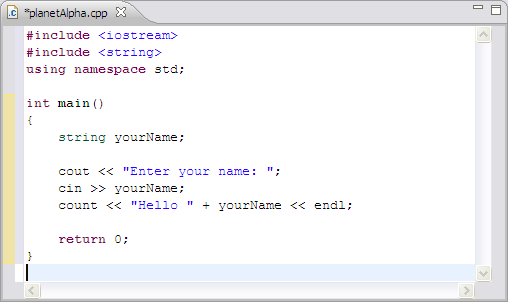

- #How to write c code for xmega 64 Bit#
- #How to write c code for xmega update#
- #How to write c code for xmega verification#
- #How to write c code for xmega software#
#How to write c code for xmega 64 Bit#
So maybe if you tried tweaking the usb polling rate.? this is all assuming your 64 bit windows can handle the normal usbasp ISP programming correctly so we know the problem is PDI-specific.
#How to write c code for xmega software#
(this is because unlike ISP, the PDI wont automatically pause/resume when the host stops sending a clock signal, and usbasp handles all usb activity in software so it has to interrupt everything else when something happens on the usb bus). changing this parameter wont harm a "normal" usb device, but my usbasp's PDI extension will fail if a new usb activity begins before the previous PDI operation was finished. maybe the usb polling rate is different in 64 bit windows? i know it can be adjusted somehow and some people like to increase it to optimize the usb mouse responsiveness. 64 bit - very interesting test case! (i'm sorry for calling it "interesting", when for you it is only "annoying").Īssuming the avrdude and libusb work exactly the same (why they should not?), the difference must be somewhere in the windows usb subsystem. Page_size in nf is 0x200 for xmega128a1 Reply Delete Read operation not supported for memory "flash"Īvrdude: failed to read all of flash memory, rc=-2 Reading | | 0% 0.00savrdude: paged_load failed /proj.hex:Īvrdude: load data flash data from input file. Writing | # | 100% 1.53sĪvrdude: verifying flash memory against. avrdude -C nf -c usbasp -p x128a1 -U flash:w././proj.hex -E noresetĪvrdude: reading input file "././proj.hex"Īvrdude: input file.

Signature cheak is fine but program flash failed: I hope someone can solve this problem for ATXmega128A1U and ATXmega64A1U.
#How to write c code for xmega verification#
Reading | # | 100% 0.54sĪvrdude: verification error, first mismatch at byte 0x0100Īvrdude: verification error content mismatch Writing | # | 100% 0.47sĪvrdude: verifying flash memory against main.hex:Īvrdude: load data flash data from input file main.hex:Īvrdude: input file main.hex contains 598 bytes To disable page erases, specify the -D option for a chip-erase, use the -e option.Īvrdude: input file main.hex auto detected as Intel Hex Reading | # | 100% 0.02sĪvrdude: NOTE: Programmer supports page erase for Xmega devices.Įach page will be erased before programming it, but no chip erase is performed. avrdude -p atxmega64a1u -P usb -c usbasp -C nf -E noreset -U flash:w:main.hexĪvrdude: AVR device initialized and ready to accept instructions Unfortunately If I found this error for make program
#How to write c code for xmega update#
I have tried for ATXmega128A1U and ATXmega64A1U and I use avrdude rev 1104 and update for nf. Sending more payload (more than a regular control message) would break the clocking but the programmer can be scheduled to work in batches, so it gathers all data from the usb and only then begins the PDI transmission (hoping that there will be no new USB transmission for a while). The tests showed that the interrupt handling a basic control transfer only steals 40-50 us, and this is short enough to allow for the reliable PDI bit banging. Strict timing is a problem for V-USB (USB protocol implementation used in USBASP) as it handles all USB transmissions in software and cannot do both things at the same time (like a guy who lacks brain power to walk and talk at the same time). Initially I thought it would be almost impossible, because PDI requires a constantly clocking signal and disconnects if the clock rate drops below 10 kHz. what?! What happened to ISP? No way I would purchase a completely new programmer model just to play with their new MCU!įortunately, implementing the new programming protocol in USBASP was not that hard. And then you read about the programming interface and. More speed (32MHz!), more peripherals (5 USARTs! 16 PWM channels!), modular design, and you can still use the same well known tools. Do you know XMEGA, the new family of AVR microcontrollers? They look really sweet, especially for someone who already mastered the AVR architecture.


 0 kommentar(er)
0 kommentar(er)
